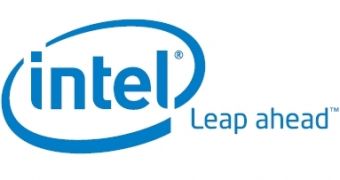Giant chip maker Intel has unveiled a little more on its plans for the mobile phone market at the International 2010 Consumer Electronics Show in Las Vegas, where it demonstrated the capabilities of its handheld-aimed Moorestown platform. Moorestown, coupled with the Linux-based Moblin platform, were used to show how new user interfaces and the increasing capabilities of smartphones are opening the door towards the development of new applications in the mobile industry, and were included in the new GW990 smartphone from LG Electronics.
Paul Otellini, Intel Corporation president and CEO, was present on the floor at CES 2010 and talked about a market trend that most of you might be already aware of: the world is moving towards mobility, and smartphones can be considered as the embodiment of a new era in personal computing. The raw power of these devices has increased significantly lately, they feature multi-tasking capabilities, as well as better connectivity options (such as 4G), thus shaping new ways of enjoying computer technologies.
“Smartphones truly embody personal computing. Wireless connectivity is critical and 3G is great, but it's not fast enough. 4G technologies like WiMAX are needed to deliver on the promise and potential of these new devices,” Otellini stated. “Two years ago I showed a suite of futuristic, compute-intensive applications for handheld devices. The computing was really done on a desktop PC behind the curtain because handhelds didn't have the processing capability yet. Two years later, the future is here,” he also stated.
According to Intel, its Moorestown platform is set to arrive on the market in the first half of the ongoing year, and should be followed in the second half of the year by the first devices to include it. Smartphones are not the only products that can be built based on it, and the company demonstrated at CES not only the LG GW990, but also a smartphone reference design from Aava Mobile, and tablet reference design from OpenPeak. As Intel puts it, the computing area is no longer available exclusively on personal computers, and the latest advances in mobile device applications, smartphones and more are here to prove exactly that.

 14 DAY TRIAL //
14 DAY TRIAL //